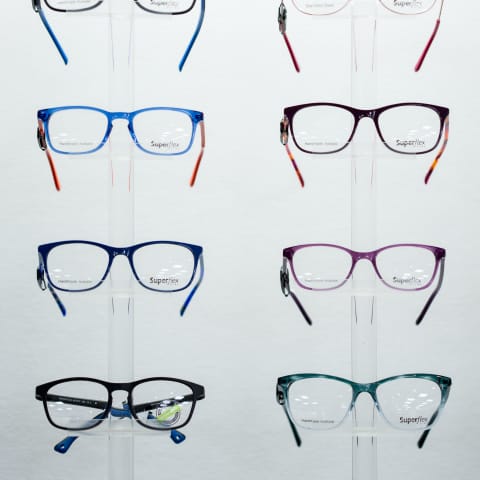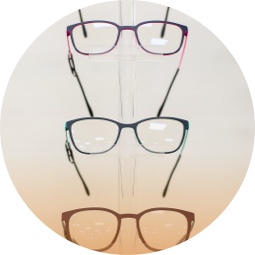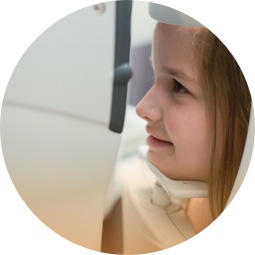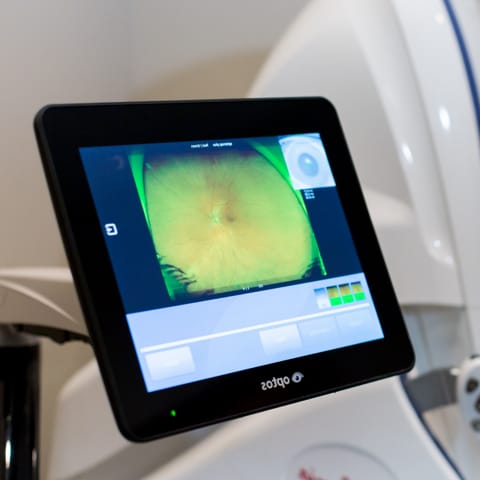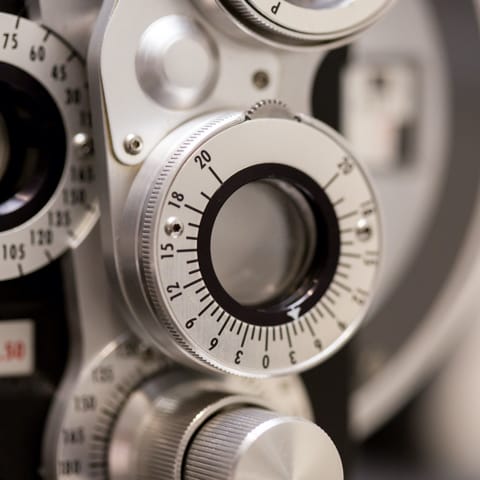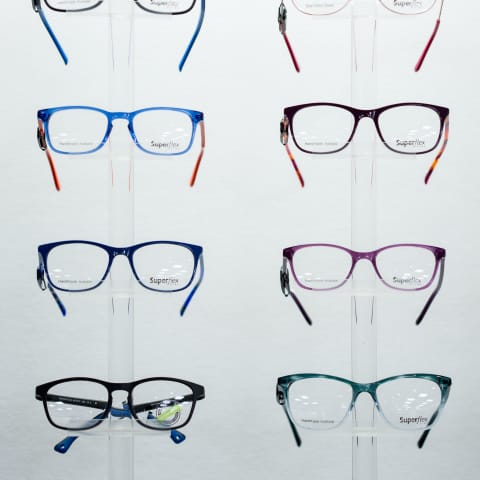Eye Exams Set Your Child Up for Success
A large portion of children’s learning takes place through vision. Catching and correcting vision problems can help your child succeed socially, academically, and athletically.
When children come in for an eye exam, we do everything we can to make them comfortable and engaged. Our testing processes help us determine what vision problems children may be experiencing, even if they can’t articulate the experiences for themselves.
We’re thorough, and we help ensure your child’s eyesight is strong and ready to support their learning. Please book your child’s appointment today.

Annual Eye Exams Should Be Part of Growing Up
Children should have their first eye exam between 6 and 9 months old. Between ages 2 and 5, it’s time for an exam before they begin school. We then recommend annual exams when they’re in school, from the time they turn 6 until they turn 19.
Delays in language acquisition and speech development can result from poor childhood vision. Children might also be misdiagnosed with behavioural problems or learning disabilities if they struggle to see.
It’s not just about a simple vision screening either. Almost half of children with vision problems pass visual acuity screenings. Sometimes, there’s more going on than just not being able to see the front of the classroom.
No Co-Pay for Kindergarten Eye Exams
We’re making it easier for parents to keep their children’s vision health is on track. We offer no co-pay for kindergarten eye exams! These exams go beyond basic vision screenings, providing a full eye health check using innovative technology like optos retinal imaging for a detailed health assessment.
It’s a much more thorough exam than the school vision screenings, giving you peace of mind about your child’s ocular health.
Special Warranty & Pricing for Kids’ Eyewear
We know how important it is to keep kids’ eyewear affordable and durable. That’s why we offer special warranty and pricing options for children’s eyewear.
Whether they need new frames or prescription lenses, we’re here to make sure they get the best value, without compromising on quality or style. Ask our team for more inforamtion about our warranty and pricing for children’s eyewear.
Eye Problems Commonly Found in Children
Myopia
Also known as nearsightedness, myopia is on the rise in Canada and around the world. Most children wear glasses to correct myopia, but there are methods that can slow the condition’s progression. Learn more about our myopia control options on our Myopia Control page.
Strabismus (Crossed Eyes)
Strabismus is a misalignment of the eyes, usually due to a muscle condition. A wandering eye is a potential indication strabismus is present. Children who tilt their heads to look at things or frequently blink and squint might also be displaying signs of the condition.
Strabismus will not correct itself, and children with this condition won’t outgrow it. But, it can be treated with excellent results if identified early. Uncorrected strabismus can lead to amblyopia.
Amblyopia (Lazy Eye)
Amblyopia occurs when there’s a large difference in prescription between the 2 eyes or when strabismus is present. This results in the brain ignoring information from one eye, causing that eye to drift.
Much like strabismus, children do not grow out of amblyopia. The earlier it is identified, the better the treatment outcomes.
Conjunctivitis (Pink Eye)
There are different kinds of conjunctivitis, but the bacterial variety is common in children. This infection is characterized by red, itchy eyes and a sticky discharge.
Because children experience the world with their hands, they may infect their eyes with bacteria if they touch a contaminated object. Conjunctivitis is also highly contagious, so it can spread quickly through schools and daycares.
Some symptoms of conjunctivitis, like red eyes, can indicate a more serious eye condition. It’s important to have your child’s eyes examined right away.
Helping You Help Them
Our optometrists are here to help your children grow up with healthy eyes and clear vision. Please book an appointment at Tutt Street Optometry today.
Come See Us
Visit Us in Pandosy Village District
We’re located in Kelowna’s Pandosy Village District, across from Raymer Elementary School.
Our Address
- #3-2918 Tutt St.
- Kelowna, BC V1Y 8Z5
Contact Information
- Phone: 250-762-3309
- Fax: 250-762-9996
- Email: eyecare@tutteyes.ca
Hours of Operation
- Monday: 8:00 AM – 5:00 PM
- Tuesday: 8:00 AM – 5:00 PM
- Wednesday: 8:00 AM – 5:00 PM
- Thursday: 8:00 AM – 5:00 PM
- Friday: 8:00 AM – 5:00 PM
- Saturday: 9:00 AM – 4:00 PM
- Sunday: Closed

Our Services
Our Brands

View All Brands




